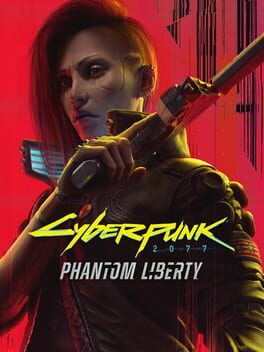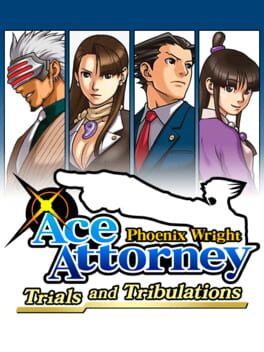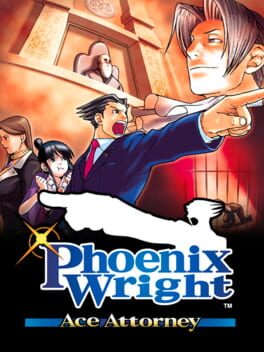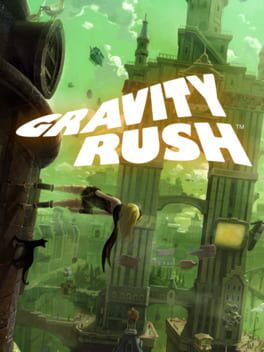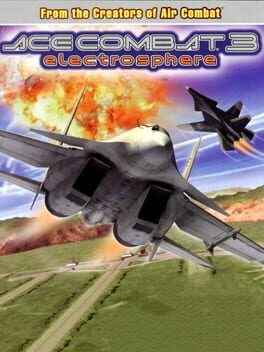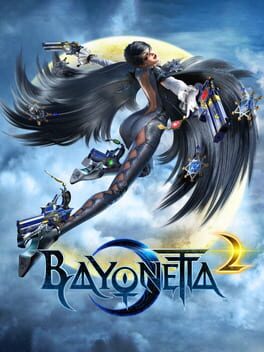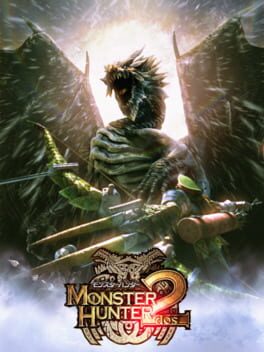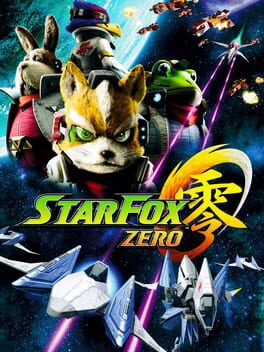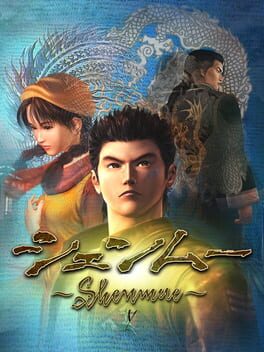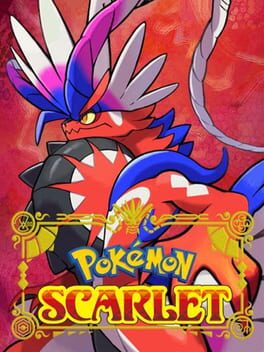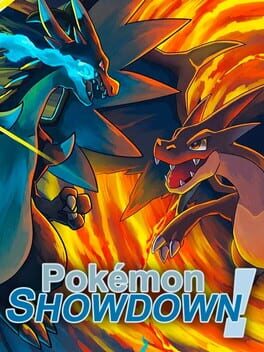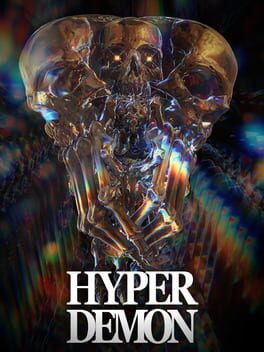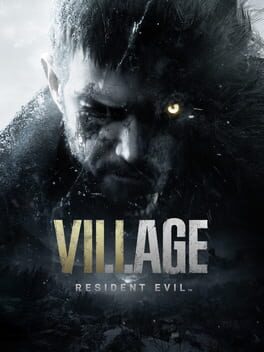Yeahlookiehere
Straight-up, no holds barred, to the point - that's what I love about Phantom Liberty's social commentary. Like when they hit that road sign and Idris Elba sprayed piss all over the speed limit - a middle finger aimed directly at the powers that be. The apotheosis of freedom of post-neoliberal expression.
Shu Takumi, I'm so sorry, I should've trusted you
Shu Takumi?
More like honk-shu takumimimi 😴
More like honk-shu takumimimi 😴
2012
Ace Combat for dumbasses
Gravity Rush for serious people
2014
this is bloodborne 2
2006
Unlike most monster hunters, this one's about hunting
2016
Star Fox Zero's controls were so good, everyone begged their favorite devs to include gyro aiming. The 1 to 1 motion controls gives players a level of dexterity and precision that far surpasses regular analogue sticks.
Not wanting to let a great idea go to waste, Nintendo brought back a similar gyro control scheme for titles like Splatoon and Breath of the Wild, both of which feel phenomenal!
Not wanting to let a great idea go to waste, Nintendo brought back a similar gyro control scheme for titles like Splatoon and Breath of the Wild, both of which feel phenomenal!
1999
Shenmue represents most of the problems I have with cinematic games, trying its hardest to emulate other works of art without understanding how or why stories succeeded in the first place. Normally, I’m unreasonably charitable to these sorts of games, even when they’re putting on airs of ‘prestigious’ art, but Shenmue’s affectation is so uniquely hollow that I struggled to see the good in it. As a pastiche of arthouse film, Shenmue manages to capture the surface level qualities (de-emphasis on plot, deliberate tempo, a focus on the realistic and mundane) but has none of the underlying substance that makes this (vaguely defined) genre work. The expressive visuals, nuanced characterization, thematic depth, and strong emotional core that makes these movies meaningful? They’re nowhere to be found in Shenmue.
Shenmue wants to immerse you in the town of Dobuita, but it gives you no reason to care about the town in the first place - the presentation is too flat and matter of fact to be visually engaging, with an atmosphere as dry and unimpressive as a local news program. It’s all a misguided attempt at ‘realism,’ further hampered by the limitations of real time rendering, providing a world that’s too blocky and undetailed to pass as any form of ‘reality.’ Even modern titles on cutting-edge hardware are nowhere close to emulating reality, so to see this attempted on something as old as the dreamcast feels totally wasteful. To be fair, Shenmue tries to liven up its presentation through fancy cinematography during cutscenes, but the restless camerawork comes off as gimmicky, haphazardly zooming and cutting and swiveling around characters for seemingly no reason. Copying cinematic techniques with little purpose in mind, never punctuating the script or enhancing the emotional impact of the scenes.
While the presentation was uninteresting, the script is somehow even worse. A bloated cast of stock characters are never defined beyond their singular character traits (and blood type?), with the protagonist somehow being the most boring of all. Ryo is a hollow shell of a human, incapable of any semblance of emotional intelligence or self reflection, never revealing any clear or defined character beyond the monotony of his brooding appearance. This is supposed to be a character study of a young man going through the grief of his father’s death, but the script does nothing to convey this, creating a character so vague and unrealized that he might as well be silent. In an actual movie, Ryo could provide subtle characterization through his actor’s performance and body language with minimal reliance on the script, but a dreamcast game could never hope to accomplish that! Games can’t handle this level of subtlety through animation alone and need to find emotional nuance elsewhere!
The whole plot just goes through the motions of a bottom of the barrel revenge story and somehow expects you to get emotionally invested in a non-character giving up on his non-friends and his non-neighbors so he can fight some non-villains and avenge his non-dad who was only on screen for 5 minutes. Most stories would try to explore the dad’s character and really sell you on how much he meant to others, but Shenmue really scrapes by on the bare minimum. There’s also some sort of romantic drama buried deep in there (included purely out of obligation), but it doesn’t accomplish anything because the 2 leads have absolutely zero chemistry and, once again, you run into the limitations of the hardware, characters’ faces too blocky and rigid to sell any sort of emotion.
To give the game some credit, it has some interesting themes in the 3rd disc, with the game turning towards a neorealist story of life in the working class - a shipping dock where people are too busy trying to survive to care about the blatant crime or injustice they see on a daily basis. But this final act doesn’t do much of anything with the premise. Ryo enters the workforce on the precipice of Japan’s economic bubble and the story does nothing to explore these socio-economic conditions, mostly using this setting as window dressing to propel B-Movie action sequences (most of which, once again, don’t stand up to actual Hong Kong cinema). Rather, Shenmue’s greatest quality is that its writing is so vaporous that you can project whatever meaning you want onto the experience - like a mirage, you can find something of value from the narrative, but only when viewed from a safe distance where you never have to engage with the text.
It might seem strange to avoid talking about Shenmue’s gameplay or unique approach to openworld design in this review, but that’s only because the format doesn’t matter. Of course, delivery and form are extremely important when it comes to storytelling, but Shenmue’s grounded slice of life realism means nothing when it’s in service of such vapid narrative and presentation. I love the idea of a world that doesn’t revolve around the player, that forces you to slow down and engage in the mundanity of day to day life, stopping to take in small details that would be overlooked in most titles - I’m just waiting for someone else to do the format justice. Someone else that can flesh out a world beyond technical details and understands that being slow doesn’t equate to being meaningful.
Shenmovies:
Have you seen any of these popular movies? Most of them are only superficially similar to Shenmue, but fans of the series might enjoy them! Yu Suzuki even took inspiration from a few of them when designing the series!
Casablanca
My Neighbor Totoro
Tokyo Story
Police Story
Chungking Express
Fist of Legend
Roman Holiday
The Hustler
Your Name
The Grandmaster
Reign of Assassins
Come Drink With Me
Ashes of Time
A Touch of Zen
Late Spring
In The Mood For Love
La Strada
Shenmue wants to immerse you in the town of Dobuita, but it gives you no reason to care about the town in the first place - the presentation is too flat and matter of fact to be visually engaging, with an atmosphere as dry and unimpressive as a local news program. It’s all a misguided attempt at ‘realism,’ further hampered by the limitations of real time rendering, providing a world that’s too blocky and undetailed to pass as any form of ‘reality.’ Even modern titles on cutting-edge hardware are nowhere close to emulating reality, so to see this attempted on something as old as the dreamcast feels totally wasteful. To be fair, Shenmue tries to liven up its presentation through fancy cinematography during cutscenes, but the restless camerawork comes off as gimmicky, haphazardly zooming and cutting and swiveling around characters for seemingly no reason. Copying cinematic techniques with little purpose in mind, never punctuating the script or enhancing the emotional impact of the scenes.
While the presentation was uninteresting, the script is somehow even worse. A bloated cast of stock characters are never defined beyond their singular character traits (and blood type?), with the protagonist somehow being the most boring of all. Ryo is a hollow shell of a human, incapable of any semblance of emotional intelligence or self reflection, never revealing any clear or defined character beyond the monotony of his brooding appearance. This is supposed to be a character study of a young man going through the grief of his father’s death, but the script does nothing to convey this, creating a character so vague and unrealized that he might as well be silent. In an actual movie, Ryo could provide subtle characterization through his actor’s performance and body language with minimal reliance on the script, but a dreamcast game could never hope to accomplish that! Games can’t handle this level of subtlety through animation alone and need to find emotional nuance elsewhere!
The whole plot just goes through the motions of a bottom of the barrel revenge story and somehow expects you to get emotionally invested in a non-character giving up on his non-friends and his non-neighbors so he can fight some non-villains and avenge his non-dad who was only on screen for 5 minutes. Most stories would try to explore the dad’s character and really sell you on how much he meant to others, but Shenmue really scrapes by on the bare minimum. There’s also some sort of romantic drama buried deep in there (included purely out of obligation), but it doesn’t accomplish anything because the 2 leads have absolutely zero chemistry and, once again, you run into the limitations of the hardware, characters’ faces too blocky and rigid to sell any sort of emotion.
To give the game some credit, it has some interesting themes in the 3rd disc, with the game turning towards a neorealist story of life in the working class - a shipping dock where people are too busy trying to survive to care about the blatant crime or injustice they see on a daily basis. But this final act doesn’t do much of anything with the premise. Ryo enters the workforce on the precipice of Japan’s economic bubble and the story does nothing to explore these socio-economic conditions, mostly using this setting as window dressing to propel B-Movie action sequences (most of which, once again, don’t stand up to actual Hong Kong cinema). Rather, Shenmue’s greatest quality is that its writing is so vaporous that you can project whatever meaning you want onto the experience - like a mirage, you can find something of value from the narrative, but only when viewed from a safe distance where you never have to engage with the text.
It might seem strange to avoid talking about Shenmue’s gameplay or unique approach to openworld design in this review, but that’s only because the format doesn’t matter. Of course, delivery and form are extremely important when it comes to storytelling, but Shenmue’s grounded slice of life realism means nothing when it’s in service of such vapid narrative and presentation. I love the idea of a world that doesn’t revolve around the player, that forces you to slow down and engage in the mundanity of day to day life, stopping to take in small details that would be overlooked in most titles - I’m just waiting for someone else to do the format justice. Someone else that can flesh out a world beyond technical details and understands that being slow doesn’t equate to being meaningful.
Shenmovies:
Have you seen any of these popular movies? Most of them are only superficially similar to Shenmue, but fans of the series might enjoy them! Yu Suzuki even took inspiration from a few of them when designing the series!
Casablanca
My Neighbor Totoro
Tokyo Story
Police Story
Chungking Express
Fist of Legend
Roman Holiday
The Hustler
Your Name
The Grandmaster
Reign of Assassins
Come Drink With Me
Ashes of Time
A Touch of Zen
Late Spring
In The Mood For Love
La Strada
2022
Lotta gender essentialism in this one
2011
There's an argument to be made that competitive Turn-Based games are a lesser alternative to their Real-Time counterparts. Making split-second decisions under pressure is more 'skillful' than sifting through menus, making FPS, RTS, and Fighting games the better choice for competitive gaming. You can force pressure in turn-based games by implementing a time limit on every turn, but that still doesn't account for execution and technical skill. Precise menuing will never be as impressive as landing perfect headshots, nailing difficult movement tech, or micromanaging 100s of units with rapid-fire button presses.
Even if we assume that Turn-Based games are just as competitive as Real-Time games, you have to consider if Pokemon represents the best the genre has to offer. The lack of positioning limits the game's skill ceiling and an overemphasis on RNG undermines strategy by arbitrarily robbing the player of their agency!
But these issues don't bother me too much. It's not the BEST ESPORT EVER, but I still think there's value to Pokemon's combat, even with the obvious design flaws. I really wish Pokemon had some level of positioning (even a grid would be cool!), but the mind games that go into swapping party members add a lot to the skill ceiling. And that's not even mentioning the layered decision making that goes into building a cohesive team. Even if you only pick from a small pool of ~30 'viable' pokemon, the ability to customize movesets, stat distribution, and equippable accessories give players a crazy amount of leeway to come up with their own strategies. If you're willing to think outside the box a little, you can even turn 'low-tier' mons into game winning carries!
While I struggle to accept the game's RNG, I believe inconsistencies resulting from accuracy/damage variation will naturally level out over time, ensuring that better players consistently come out on top.
My biggest concern is the potential for cheating. I'm not referring to manipulating the online client or even generating pokemon for offline events (that's not cheating lol). I'm referring to people making an ass of themselves by using outside influences to get a leg up on live, in-person events.
Game Freak has tried their best to curb any sort of cheating, but there are still obvious holes that anyone can take advantage of. When a person makes a crazy read, is that the result of proper conditioning and outplaying their opponent? What if their motorized butt plug is feeding them all the right moves? Is it hooked up to a super-computer that perfectly calculates the best decisions? Is a team of trained professionals feeding live data through morse vibrations? Maybe someone in the audience is just futzing with the remote?
This uncertainty taints the outcome of every match, undermining good sportsmanship with the presence of filthy cheaters. I still enjoy pokemon casually, but Game Freak will need to implement some sort of wireless signal jammer for me to respect competitive pokemon again
Even if we assume that Turn-Based games are just as competitive as Real-Time games, you have to consider if Pokemon represents the best the genre has to offer. The lack of positioning limits the game's skill ceiling and an overemphasis on RNG undermines strategy by arbitrarily robbing the player of their agency!
But these issues don't bother me too much. It's not the BEST ESPORT EVER, but I still think there's value to Pokemon's combat, even with the obvious design flaws. I really wish Pokemon had some level of positioning (even a grid would be cool!), but the mind games that go into swapping party members add a lot to the skill ceiling. And that's not even mentioning the layered decision making that goes into building a cohesive team. Even if you only pick from a small pool of ~30 'viable' pokemon, the ability to customize movesets, stat distribution, and equippable accessories give players a crazy amount of leeway to come up with their own strategies. If you're willing to think outside the box a little, you can even turn 'low-tier' mons into game winning carries!
While I struggle to accept the game's RNG, I believe inconsistencies resulting from accuracy/damage variation will naturally level out over time, ensuring that better players consistently come out on top.
My biggest concern is the potential for cheating. I'm not referring to manipulating the online client or even generating pokemon for offline events (that's not cheating lol). I'm referring to people making an ass of themselves by using outside influences to get a leg up on live, in-person events.
Game Freak has tried their best to curb any sort of cheating, but there are still obvious holes that anyone can take advantage of. When a person makes a crazy read, is that the result of proper conditioning and outplaying their opponent? What if their motorized butt plug is feeding them all the right moves? Is it hooked up to a super-computer that perfectly calculates the best decisions? Is a team of trained professionals feeding live data through morse vibrations? Maybe someone in the audience is just futzing with the remote?
This uncertainty taints the outcome of every match, undermining good sportsmanship with the presence of filthy cheaters. I still enjoy pokemon casually, but Game Freak will need to implement some sort of wireless signal jammer for me to respect competitive pokemon again
2022
Hyper Demon is basically just Doom Eternal for people who liked Eternal’s shift towards being a ‘game-y game’ but didn’t like how it executed its mechanics.
Both games try to combine Ninja Gaiden’s high difficulty and hyper aggressive enemy design with fps combat, creating stylish action games focused on RAW EFFICIENCY - killing enemies faster than they can kill you. Whereas Eternal took influence from MMO combat with cooldown management, infinitely replenishing resources, frequent healing, and damage rotations - Hyper Demon takes influence from minimalist arcade games, focusing on simple tactical trade-offs, routing, and long term risk/reward with a small but multi-faceted toolset.
An easy example is by looking at the first enemy you meet in the game - a Spawner (don’t know the official names, sorry). You can instantly kill the Spawner with a long-range laser, kill it with a melee attack to grant an instant speed boost, or kill it with your daggers to drop an item box.
If it drops an item box, you have 3 options -
1. Destroy the box with a laser to spawn a large swarm of homing daggers, automatically killing any nearby enemies
2. Destroy the box with a dash for a speed boost
3. Destroy the box with your daggers to spawn GEMS
Anyone familiar with Ninja Gaiden’s essence system knows exactly how this works. Pick up theessence gems to level up your weapons (HD does this automatically, no need to buy things from a menu) or destroy the essence to charge up a UT high damage super attack (in this case a big-ass laser beam). You’re balancing the short-term value of laser attacks vs the long-term value of powering up your weapons. And it’s not like you can stockpile these lasers - just like NG, you either use it or lose it.
BUT THEN, you have to consider aiming the laser directly at an enemy vs aiming the laser at the ground, splitting the shot to stun multiple enemies simultaneously.
The other enemies are also interesting to fight against! Larvae are trivial if shot from afar but function as jump pads if you dash into them, giving you a reason to get close. Spider enemies are annoying because they absorb any essence you leave on the ground, but if you deliberately leave them alive for long enough, they‘ll spawn explosive canisters that can be shot to decimate waves of enemies (and the explosions are bigger if you use a laser). There are also Snakes which are mostly harmless, but if you leave them alive for too long, they’ll block access to slow-mo power-ups by surrounding them with impenetrable steel tails (and the power-ups themselves can be sacrificed in place of Essence if you want to shoot a fat laser). Enemies spawn in large groups, so you always have to consider ‘What enemy should I keep alive? Who’s my biggest priority right now?’ There are even more enemy types in the game, but those will be a surprise for anyone who can survive for more than 2 minutes (much harder than it sounds!).
I’m not gonna list every decision you make in a run (I haven’t even talked about all of the movement options like bunny-hopping, fakes, or shotgun jumping) or go over its commitment to fairness (great sound design + spherical projection provide near perfect information) but hopefully you can see how every interaction is about making a deliberate trade-off that can subtly snowball over the course of a run. Routing what enemies you want to kill and how you want to kill them has a lot of depth! And this is all tied together with a simple scoring system where you lose points every second but regain points anytime you kill an enemy, forcing you to play as aggressively as possible if you want to maintain a high score. I’m absolutely in love with this game, and can see myself chasing high scores for the rest of the year. If Eternal rubbed you the wrong way (or you just want an alternative to Ultrakill’s Cyber Grind), then I highly recommend Hyper Demon!!!
Both games try to combine Ninja Gaiden’s high difficulty and hyper aggressive enemy design with fps combat, creating stylish action games focused on RAW EFFICIENCY - killing enemies faster than they can kill you. Whereas Eternal took influence from MMO combat with cooldown management, infinitely replenishing resources, frequent healing, and damage rotations - Hyper Demon takes influence from minimalist arcade games, focusing on simple tactical trade-offs, routing, and long term risk/reward with a small but multi-faceted toolset.
An easy example is by looking at the first enemy you meet in the game - a Spawner (don’t know the official names, sorry). You can instantly kill the Spawner with a long-range laser, kill it with a melee attack to grant an instant speed boost, or kill it with your daggers to drop an item box.
If it drops an item box, you have 3 options -
1. Destroy the box with a laser to spawn a large swarm of homing daggers, automatically killing any nearby enemies
2. Destroy the box with a dash for a speed boost
3. Destroy the box with your daggers to spawn GEMS
Anyone familiar with Ninja Gaiden’s essence system knows exactly how this works. Pick up the
BUT THEN, you have to consider aiming the laser directly at an enemy vs aiming the laser at the ground, splitting the shot to stun multiple enemies simultaneously.
The other enemies are also interesting to fight against! Larvae are trivial if shot from afar but function as jump pads if you dash into them, giving you a reason to get close. Spider enemies are annoying because they absorb any essence you leave on the ground, but if you deliberately leave them alive for long enough, they‘ll spawn explosive canisters that can be shot to decimate waves of enemies (and the explosions are bigger if you use a laser). There are also Snakes which are mostly harmless, but if you leave them alive for too long, they’ll block access to slow-mo power-ups by surrounding them with impenetrable steel tails (and the power-ups themselves can be sacrificed in place of Essence if you want to shoot a fat laser). Enemies spawn in large groups, so you always have to consider ‘What enemy should I keep alive? Who’s my biggest priority right now?’ There are even more enemy types in the game, but those will be a surprise for anyone who can survive for more than 2 minutes (much harder than it sounds!).
I’m not gonna list every decision you make in a run (I haven’t even talked about all of the movement options like bunny-hopping, fakes, or shotgun jumping) or go over its commitment to fairness (great sound design + spherical projection provide near perfect information) but hopefully you can see how every interaction is about making a deliberate trade-off that can subtly snowball over the course of a run. Routing what enemies you want to kill and how you want to kill them has a lot of depth! And this is all tied together with a simple scoring system where you lose points every second but regain points anytime you kill an enemy, forcing you to play as aggressively as possible if you want to maintain a high score. I’m absolutely in love with this game, and can see myself chasing high scores for the rest of the year. If Eternal rubbed you the wrong way (or you just want an alternative to Ultrakill’s Cyber Grind), then I highly recommend Hyper Demon!!!
Having to micromanage 6 characters in real-time with no way to pause or slow down combat (outside of chain attacks) makes Xenoblade 3 one of the most chaotic and execution-heavy JRPGs I've ever played! Pair that with a strong emphasis on spacing/positioning, and Xeno3 easily has the BEST combat system in the series.
However, there are 3 massive design flaws that hold it back from being truly great instead of just relatively better than other JRPGs.
First is its poor implementation of cooldown combat -- most games that rely entirely on cooldowns are built so that playing efficiently means spamming every ability as frequently as possible. Every second an ability is spent off of cooldown is a second of wasted healing or damage.
Basically, cooldowns reduce combat from a series of tactical decisions to a rigid 'schedule' of button presses, hitting every attack at set intervals to maximize effectiveness.
The only way to make these systems engaging is to create situations where the player is encouraged to withhold their abilities, calculating risk/reward and waiting for the perfect opportunity instead of turning everything into a spam fest. This can be accomplished through enemies that try to disrupt your rotation with their attacks (raid bosses), stringent resource management (mp/stamina/whatever), or situationally useful abilities (extra effective when the right conditions are set).
Apart from a handful of conditional abilities, Xeno3 doesn't really do this. In fact, since the most powerful super attacks in the game are fueled by the number of abilities you use, the player is actively rewarded for constant cooldown rotations instead of deliberate decision making. You want to activate interlinks/chain attacks/talents as frequently as possible? Just spam, dude.
Most enemies can't even interrupt your attacks, so you don't have to worry about waiting for an opening before commiting to an animation ie. Monster Hunter.
It doesn't matter what class or flavor of dps you're using, whether you're a hammer wielding heavy hitter, a long-range gunslinger, a crit-based dual wielder, a bleed-based archer, a buffing healer -- you're hitting all your cooldowns as fast as you can.
The second design flaw is the godawful party a.i. that is constantly ignoring your orders, running into enemies' attacks, or placing their buffs where no one can use them. The game gives you tools to micromanage your party members, but there's only so much you can do when they randomly disobey orders like using the opposite status effect you tell them to use or randomly repositioning themselves away from where you placed them.
I imagine some of this can be fixed in upcoming patches, but I doubt Monolith can totally redesign the A.I. so they're not constantly sabotaging you. At least, not without some sort of customizable flowchart akin to FFXII or Deadfire.
The third and arguably most damaging flaw is the chain attack. This powerful super move forms the cornerstone of your strategy, letting your team safely dish out millions of points of damage, fully heal your party, and even apply status effects to enemies without fear of retaliation.
Anyone familiar with XB1 or 2 will have a decent understanding of how it works: time pauses and you will get to pick one of 3 randomly selected party members to provide a passive bonus to the chain attack (damage penetration/ aggro resets/ stat buffs/ etc.) Afterwards, every party member gets to use one attack against their target, with each attack filling an on-screen gauge.
Once the gauge is full, the character chosen for their passive bonus unleashes a powerful super attack and the chain attack starts a new round where you pick a new passive bonus and some characters are given a chance to attack again. If done properly, an efficient strategy will let you go 5 rounds in a single chain attack!
There are all sorts of secondary rules where the class of a character affects the rate at which the chain attack gauge fills, and how your optional hero characters have their own perks, or how overfilling the gauge lets more characters attack each turn… I'll admit, learning this mechanic is pretty tricky and took several hours for me to form a consistent strategy. So why is it bad???
Problem is, chain attacks RUIN the flow of combat by replacing the real-time chaos with a turn-based minigame where you spend most of your time watching flashy cutscenes.
As I said, the minigame has a lot of convoluted rules that dictate the length and effectiveness of the attack, but once you settle on a good strategy, it's just a matter of running through the motions, mindlessly picking the optimal attacks every chain attack. It quickly devolves into 'pick the same attacks in the same order you always do, watch 2 minutes of cutscenes as you wail on a defenseless enemy.'
In fact, there are some fights where the majority of an encounter is spent watching chain attack cutscenes, making me question the point of combat in the first place! For many boss fights, I feel like I'm just buying time until I can use my chain attack to chunk 40-80% of their health bar. Xenoblade's biggest strength is that it plays out in real-time! If I wanted to pause time and slowly micromanage, there are much better alternatives!
These flaws have been around since the first Xenoblade released 10 years ago. And every time Monolith makes a new entry, they come up with a bunch of convoluted combat gimmicks instead of fixing the series' shaky foundation. After XB 1 introduced Chain Attacks, later entries had Overdrives, Elemental Combos, Fusion Combos, Interlinks, Fusion Arts, Field Abilities, etc. etc.
Learning these systems is fun at first, but once you understand how they work, it's obvious that these mechanics have one or two optimal strategies that are repeated ad nauseum through hundreds of samey, repetitive battles.
Monolith is making the combat flowchart longer and longer but they aren't changing the fact that it's still a flowchart.
I would be remiss to not acknowledge Xenoblade 3's deep character customization, combining Final Fantasy 5's mix and match job system with the customizable movesets and game-changing armor that Xenoblade is known for. For people with a min-maxing mindset, you could argue that customization is the REAL game and the combat encounters are just an excuse to test out new builds.
And you know what? I can totally see that argument. Xenoblade's emphasis on optimizing numbers isn't that different from the efficiency simulators/machine building seen in city builders/tower defense/programming puzzlers.
The big difference is that these games don't make you sit through the boring stuff. In games like Monster Train or Opus Magnum or Cities: Skylines you make some decisions, speed up time, then see the results of your actions, tweaking your build based on feedback. If combat is just a means to an end, then there's no reason for me to sit through dozens of hours of it when I'm just here for the number crunching.
Despite my complaints, I still enjoyed the game in the same way I enjoyed most jrpgs, begrudgingly pushing through hours of samey combat just so I can enjoy the narrative, party customization, and beautiful presentation. I don't consider it to be peak fiction, but Xenoblade 3 hits some emotional and thematic high points that match some of my favorite PS1 jrpgs, easily cementing it as 'one of the best in the genre.'
I'm just tired and burnt out on a genre that sucks up so much of my time for no good reason. A genre where the majority of the runtime is wasted on deeply flawed combat systems that are rarely engaging. Maybe the upcoming dlc will introduce some tricky boss fights or give some QOL updates that speed up chain attacks! But for now it's a 7 for me! I hope one day I can return to this and give it something higher.
However, there are 3 massive design flaws that hold it back from being truly great instead of just relatively better than other JRPGs.
First is its poor implementation of cooldown combat -- most games that rely entirely on cooldowns are built so that playing efficiently means spamming every ability as frequently as possible. Every second an ability is spent off of cooldown is a second of wasted healing or damage.
Basically, cooldowns reduce combat from a series of tactical decisions to a rigid 'schedule' of button presses, hitting every attack at set intervals to maximize effectiveness.
The only way to make these systems engaging is to create situations where the player is encouraged to withhold their abilities, calculating risk/reward and waiting for the perfect opportunity instead of turning everything into a spam fest. This can be accomplished through enemies that try to disrupt your rotation with their attacks (raid bosses), stringent resource management (mp/stamina/whatever), or situationally useful abilities (extra effective when the right conditions are set).
Apart from a handful of conditional abilities, Xeno3 doesn't really do this. In fact, since the most powerful super attacks in the game are fueled by the number of abilities you use, the player is actively rewarded for constant cooldown rotations instead of deliberate decision making. You want to activate interlinks/chain attacks/talents as frequently as possible? Just spam, dude.
Most enemies can't even interrupt your attacks, so you don't have to worry about waiting for an opening before commiting to an animation ie. Monster Hunter.
It doesn't matter what class or flavor of dps you're using, whether you're a hammer wielding heavy hitter, a long-range gunslinger, a crit-based dual wielder, a bleed-based archer, a buffing healer -- you're hitting all your cooldowns as fast as you can.
The second design flaw is the godawful party a.i. that is constantly ignoring your orders, running into enemies' attacks, or placing their buffs where no one can use them. The game gives you tools to micromanage your party members, but there's only so much you can do when they randomly disobey orders like using the opposite status effect you tell them to use or randomly repositioning themselves away from where you placed them.
I imagine some of this can be fixed in upcoming patches, but I doubt Monolith can totally redesign the A.I. so they're not constantly sabotaging you. At least, not without some sort of customizable flowchart akin to FFXII or Deadfire.
The third and arguably most damaging flaw is the chain attack. This powerful super move forms the cornerstone of your strategy, letting your team safely dish out millions of points of damage, fully heal your party, and even apply status effects to enemies without fear of retaliation.
Anyone familiar with XB1 or 2 will have a decent understanding of how it works: time pauses and you will get to pick one of 3 randomly selected party members to provide a passive bonus to the chain attack (damage penetration/ aggro resets/ stat buffs/ etc.) Afterwards, every party member gets to use one attack against their target, with each attack filling an on-screen gauge.
Once the gauge is full, the character chosen for their passive bonus unleashes a powerful super attack and the chain attack starts a new round where you pick a new passive bonus and some characters are given a chance to attack again. If done properly, an efficient strategy will let you go 5 rounds in a single chain attack!
There are all sorts of secondary rules where the class of a character affects the rate at which the chain attack gauge fills, and how your optional hero characters have their own perks, or how overfilling the gauge lets more characters attack each turn… I'll admit, learning this mechanic is pretty tricky and took several hours for me to form a consistent strategy. So why is it bad???
Problem is, chain attacks RUIN the flow of combat by replacing the real-time chaos with a turn-based minigame where you spend most of your time watching flashy cutscenes.
As I said, the minigame has a lot of convoluted rules that dictate the length and effectiveness of the attack, but once you settle on a good strategy, it's just a matter of running through the motions, mindlessly picking the optimal attacks every chain attack. It quickly devolves into 'pick the same attacks in the same order you always do, watch 2 minutes of cutscenes as you wail on a defenseless enemy.'
In fact, there are some fights where the majority of an encounter is spent watching chain attack cutscenes, making me question the point of combat in the first place! For many boss fights, I feel like I'm just buying time until I can use my chain attack to chunk 40-80% of their health bar. Xenoblade's biggest strength is that it plays out in real-time! If I wanted to pause time and slowly micromanage, there are much better alternatives!
These flaws have been around since the first Xenoblade released 10 years ago. And every time Monolith makes a new entry, they come up with a bunch of convoluted combat gimmicks instead of fixing the series' shaky foundation. After XB 1 introduced Chain Attacks, later entries had Overdrives, Elemental Combos, Fusion Combos, Interlinks, Fusion Arts, Field Abilities, etc. etc.
Learning these systems is fun at first, but once you understand how they work, it's obvious that these mechanics have one or two optimal strategies that are repeated ad nauseum through hundreds of samey, repetitive battles.
Monolith is making the combat flowchart longer and longer but they aren't changing the fact that it's still a flowchart.
I would be remiss to not acknowledge Xenoblade 3's deep character customization, combining Final Fantasy 5's mix and match job system with the customizable movesets and game-changing armor that Xenoblade is known for. For people with a min-maxing mindset, you could argue that customization is the REAL game and the combat encounters are just an excuse to test out new builds.
And you know what? I can totally see that argument. Xenoblade's emphasis on optimizing numbers isn't that different from the efficiency simulators/machine building seen in city builders/tower defense/programming puzzlers.
The big difference is that these games don't make you sit through the boring stuff. In games like Monster Train or Opus Magnum or Cities: Skylines you make some decisions, speed up time, then see the results of your actions, tweaking your build based on feedback. If combat is just a means to an end, then there's no reason for me to sit through dozens of hours of it when I'm just here for the number crunching.
Despite my complaints, I still enjoyed the game in the same way I enjoyed most jrpgs, begrudgingly pushing through hours of samey combat just so I can enjoy the narrative, party customization, and beautiful presentation. I don't consider it to be peak fiction, but Xenoblade 3 hits some emotional and thematic high points that match some of my favorite PS1 jrpgs, easily cementing it as 'one of the best in the genre.'
I'm just tired and burnt out on a genre that sucks up so much of my time for no good reason. A genre where the majority of the runtime is wasted on deeply flawed combat systems that are rarely engaging. Maybe the upcoming dlc will introduce some tricky boss fights or give some QOL updates that speed up chain attacks! But for now it's a 7 for me! I hope one day I can return to this and give it something higher.
2021
It's like porn, but less respectable
It's hard to fault 'Ethan Winters and The Great Spooky Coochie' for drawing inspiration from RE4. Not only is 4 one of Capcom's best selling titles, it's flat out one of the best action games of all time!
But 'The Winters' Winter Holiday' constantly bungles its attempts at emulating RE4, robbing the game of any tension or tactical depth.
At its best, RE4 would put you in elaborate, multi-level jungle gyms with enemies slowly approaching on all sides, testing your ability to traverse tricky environments while applying precise and effective crowd control.
You could target explosive enemies to efficiently clear groups without wasting ammo. Risk closing the distance in exchange for powerful melee attacks. Abuse context sensitive obstacles like ladders, bookshelves, and bear traps to limit enemies' range of movement.
Or maybe it would put you in a tiny enclosed space where split-second decisions and exaggerated hit-reactions were your only tools. Snap target enemies' limbs to slow them down or disable their attacks, giving you baaaarely enough room to breathe in these claustrophobic encounters.
'Spillage Village' levels are mostly simple roundabouts where you can endlessly kite tiny groups of enemies in circles.
Apart from pushing bookshelves and distracting enemies with flour, most of the tactical options in RE4 are gone. No more risky suplexes. No more abusing hit-reactions. No more statregies beyond 'run in circle shoot in head.'
There's one big elaborate fight towards the end, introducing some much needed verticality and enemy density, but at that point Ethan is so powerful that it feels closer to a victory lap than a challenging gauntlet.
Inventory is so big you can pick up everything you see without worry. Currency is so abundant you can buy nearly whatever you want. Chase sequences are too linear and easy to be scary. 'Regenerators' are susceptible to all ammo types, undermining the risk/reward present in the original.
Whatever complexity RE4 had going for it was stamped out in favor of hokey setpiece-fights that are too linear and predictable to arouse any feelings.
But it's not all bad! The snowy village and its surrounding dungeons are absolutely gorgeous, providing what might be my favorite setting in the series, even if it's not very original.
Booby lady and Hammer daddy are cool as hell, with the supporting cast being weird and compelling in their own ways!
And hell, some of the emotional moments were strangely potent, especially in a series known for B-movie cheese.
If 'Dommytrescu's Daunting Donkaroos' (Diggeri-daddy's Despicable Date?) leaned into its vibes and storytelling instead of being a half-assed action game, this might've been a unique entry in the series that stands on its own 2 merits! Right now, it's just a bland mess that makes me want to replay 4 instead.
But 'The Winters' Winter Holiday' constantly bungles its attempts at emulating RE4, robbing the game of any tension or tactical depth.
At its best, RE4 would put you in elaborate, multi-level jungle gyms with enemies slowly approaching on all sides, testing your ability to traverse tricky environments while applying precise and effective crowd control.
You could target explosive enemies to efficiently clear groups without wasting ammo. Risk closing the distance in exchange for powerful melee attacks. Abuse context sensitive obstacles like ladders, bookshelves, and bear traps to limit enemies' range of movement.
Or maybe it would put you in a tiny enclosed space where split-second decisions and exaggerated hit-reactions were your only tools. Snap target enemies' limbs to slow them down or disable their attacks, giving you baaaarely enough room to breathe in these claustrophobic encounters.
'Spillage Village' levels are mostly simple roundabouts where you can endlessly kite tiny groups of enemies in circles.
Apart from pushing bookshelves and distracting enemies with flour, most of the tactical options in RE4 are gone. No more risky suplexes. No more abusing hit-reactions. No more statregies beyond 'run in circle shoot in head.'
There's one big elaborate fight towards the end, introducing some much needed verticality and enemy density, but at that point Ethan is so powerful that it feels closer to a victory lap than a challenging gauntlet.
Inventory is so big you can pick up everything you see without worry. Currency is so abundant you can buy nearly whatever you want. Chase sequences are too linear and easy to be scary. 'Regenerators' are susceptible to all ammo types, undermining the risk/reward present in the original.
Whatever complexity RE4 had going for it was stamped out in favor of hokey setpiece-fights that are too linear and predictable to arouse any feelings.
But it's not all bad! The snowy village and its surrounding dungeons are absolutely gorgeous, providing what might be my favorite setting in the series, even if it's not very original.
Booby lady and Hammer daddy are cool as hell, with the supporting cast being weird and compelling in their own ways!
And hell, some of the emotional moments were strangely potent, especially in a series known for B-movie cheese.
If 'Dommytrescu's Daunting Donkaroos' (Diggeri-daddy's Despicable Date?) leaned into its vibes and storytelling instead of being a half-assed action game, this might've been a unique entry in the series that stands on its own 2 merits! Right now, it's just a bland mess that makes me want to replay 4 instead.
